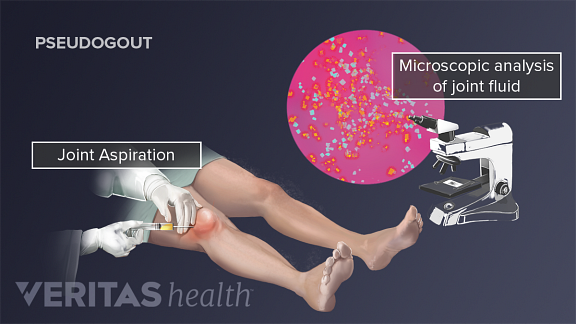
An endocrine disorder (your doctor should run basic blood tests if this condition is diagnosed).A more general metabolic disorder that is not isolated to cartilage.Crystal deposition in joints: prevalence and relevance for arthritis. Faulty metabolism within the cartilage itselfġ0 Pritzker KP.CPP crystals are produced within a joint's cartilage as the result of.Many experts theorize the following steps occur: Though experts have known about calcium pyrophosphate crystals for decades, research has yet to uncover how and why the crystals form in cartilage or why some people with CPPD experience symptoms and others do not. Lastly, underlying medical conditions have been associated with the development of CPPD, including excess iron storage disease (hemochromatosis), an overactive parathyroid gland (hyperparathyroidism), low magnesium levels, and most commonly, an underactive thyroid (hypothyroidism). The ANKH gene and familial calcium pyrophosphate dihydrate deposition disease. Research suggests that a mutation in the ANKH gene, a gene that helps regulate metabolism, makes a person more prone to accumulating calcium pyrophosphate crystals at an earlier age compared to people without the genetic mutation.Ĩ Netter P, Bardin T, Bianchi A, Richette P, Loeuille D. In addition to aging, genetics also plays a role. Osteoarthritis and articular chondrocalcinosis in the elderly. One study found that 15% of people aged 65 to 74 had signs of calcium pyrophosphate crystal deposition, as did 40% of people aged 84 and older.ħ Wilkins E, Dieppe P, Maddison P, Evison G. The European League Against Rheumatism says that, when controlling for other factors, the risk of calcium pyrophosphate crystal deposition doubles every 10 years for people between ages 45 and 85.Ħ Mayo Clinic. Who Gets CPPD?Įstimates vary regarding how many people have calcium pyrophosphate crystal deposition, but researchers know for certain that risk increases dramatically with age. However, inflammation and swelling caused by the crystals can accelerate joint damage, so individuals who experience these symptoms should talk to their doctor and seek treatment. In these cases, no treatment is needed.Ĭalcium pyrophosphate crystals cannot be removed from a joint. Many people have calcium pyrophosphate crystals in their joints but do not experience any pain. This condition is sometimes misdiagnosed as osteoarthritis or rheumatoid arthritis and may be referred to as pseudo-osteoarthritis and pseudo-rheumatoid arthritis. The crystals can trigger an immune response that is less extreme than pseudogout, resulting in a milder, duller pain with some swelling and redness. Chronic CPP crystal inflammatory arthritis.See All About Pseudogout - Symptoms, Diagnosis, Treatment (The symptoms can mimic gout, which is caused by uric acid crystals, not CPP crystals.)

This condition is known as acute calcium pyrophosphate crystal arthritis or, more simply, pseudogout.

The forgotten crystal arthritis: calcium pyrophosphate deposition. Disease Management Project: Gout and Pseudogout. The crystals can trigger an immune system response that results in acute pain, swelling, and redness that lasts for a brief period of time, generally 5 to 14 days.Ĥ Cleveland Clinics.

Crystals, inflammation, and osteoarthritis. PubMed PMID: 7880123 PubMed Central PMCID: PMC1005513. Factors affecting radiographic progression of knee osteoarthritis. Some experts believe that people who have osteoarthritis with calcium pyrophosphate deposition may experience more swelling and inflammation than people who have osteoarthritis without crystals.Ģ Ledingham J, Regan M, Jones A, Doherty M. European League Against Rheumatism recommendations for calcium pyrophosphate deposition. Research suggests that CPP crystals are up to three times more common in patients who have osteoarthritis than those who do not.ġ Zhang W, Doherty M, Bardin T, Barskova V, Guerne PA, Jansen TL, Leeb BF, Perez-Ruiz F, Pimentao J, Punzi L, Richette P, Sivera F, Uhlig T, Watt I, Pascual E. Patients with CPPD typically have one of the following: When these crystals are present in a joint it is called calcium pyrophosphate deposition (CPPD).Įxperts are unsure what causes CPPD and the symptoms can vary widely. Joint pain and inflammation as well as joint degeneration can be caused by calcium pyrophosphate crystals (CPP crystals), which can deposit in a joint's cartilage.


 0 kommentar(er)
0 kommentar(er)
